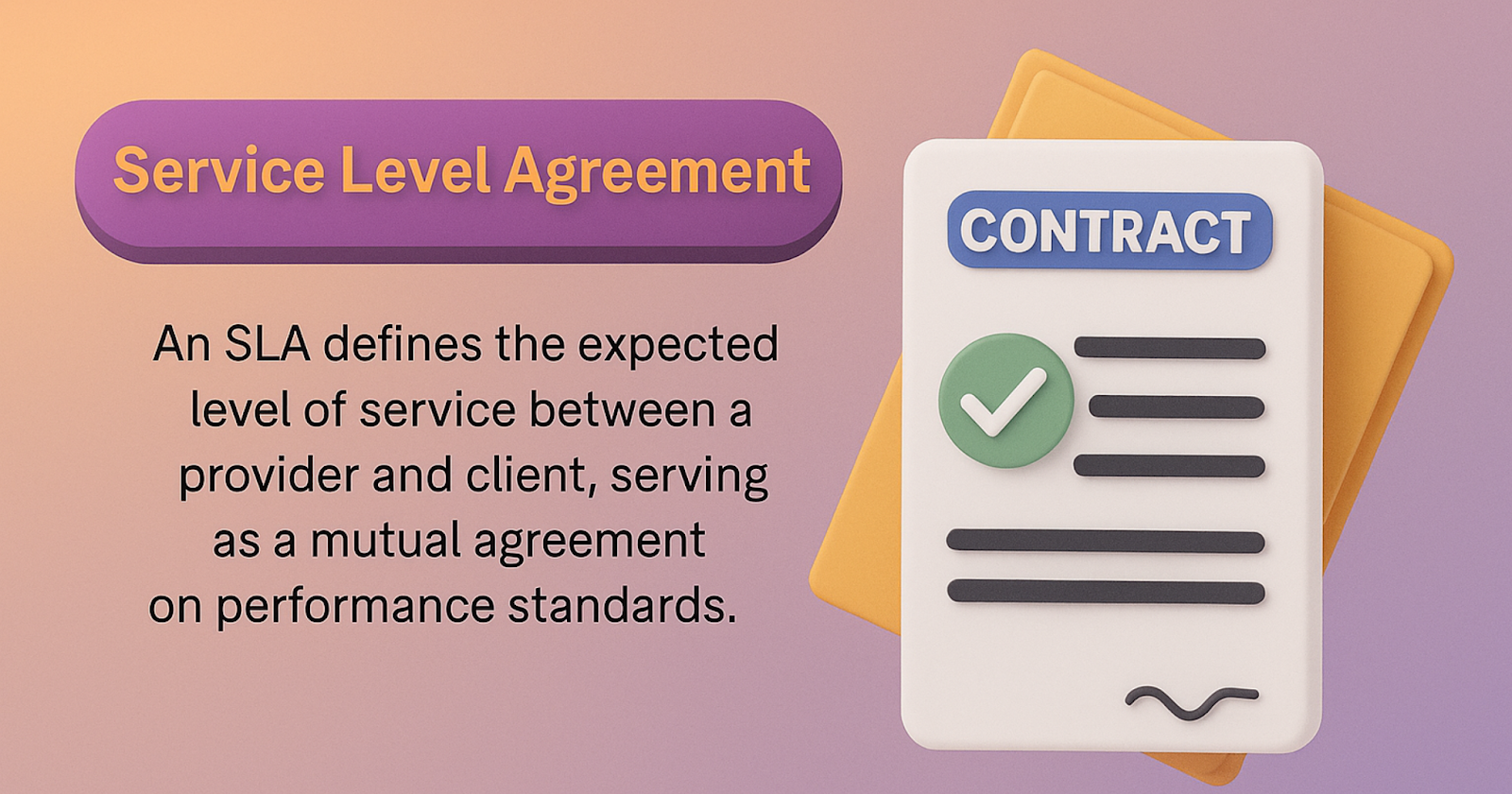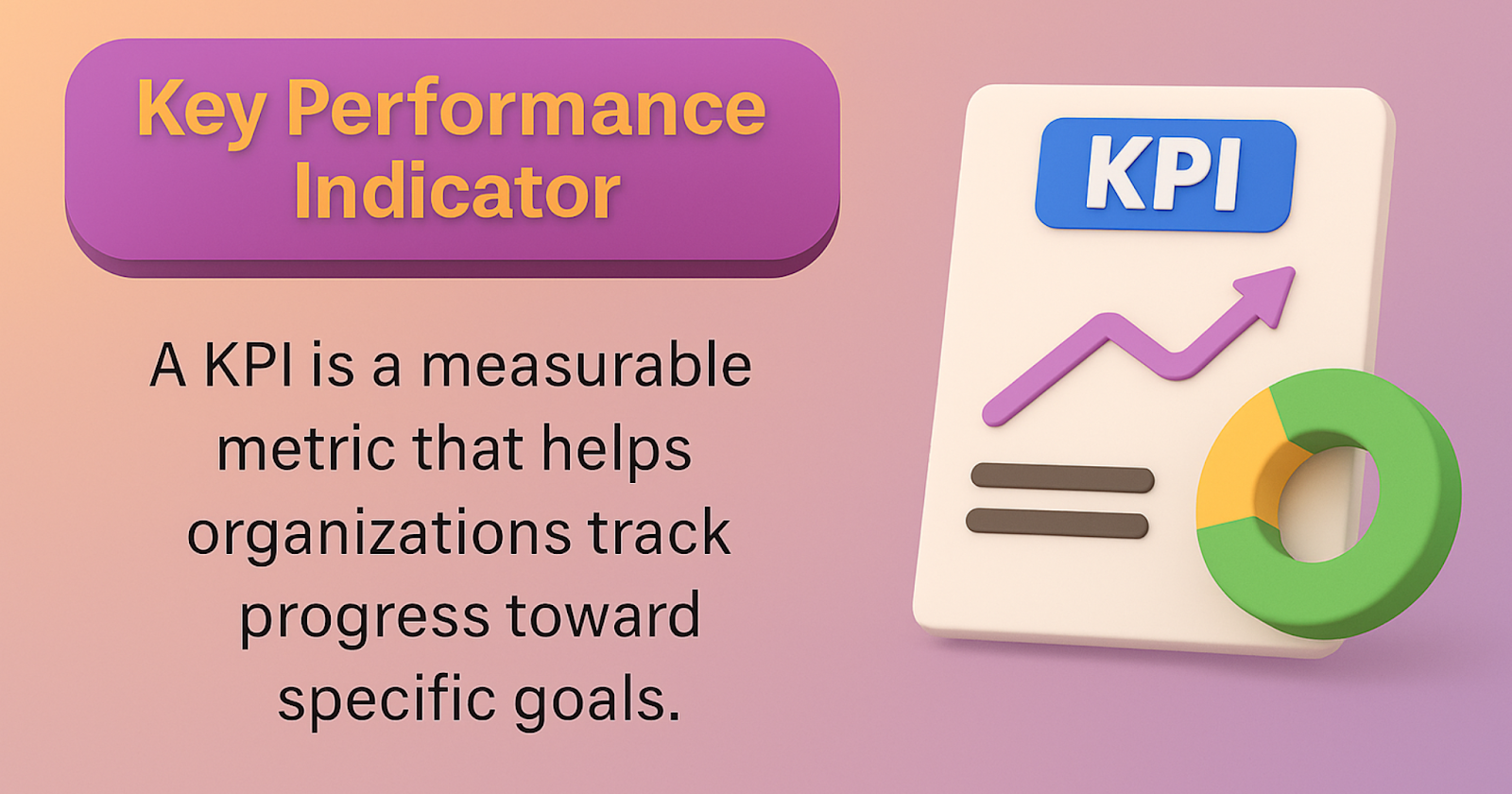

Incident Response Maturity: Leveraging Tech Proactively
Strengthen your incident response with observability, AI, and automation
“SLA vs KPI” might sound like a technical debate, but understanding the difference is essential for anyone managing service delivery or tracking performance. These two terms often appear side by side in IT contracts, customer support dashboards, and business strategy meetings — yet they serve very different roles.
A Service Level Agreement (SLA) sets the service expectations between two parties. A Key Performance Indicator (KPI), on the other hand, is a measurable value that tracks how well those expectations are being met. SLAs are about the promise — KPIs are about the proof. In this guide, we’ll break down exactly how these tools differ, where they overlap, and how to use both to improve accountability, performance, and client satisfaction.

A Service Level Agreement (SLA) is a formal commitment between a service provider and a client that outlines what level of service will be delivered. It sets clear boundaries for what’s expected, what’s guaranteed, and what happens if those guarantees aren’t met. SLAs are commonly used in industries like IT services, SaaS, logistics, telecommunications, and managed support — anywhere consistent service delivery is critical.
At its core, an SLA defines:
For example, in IT support, an SLA might state that all critical issues will receive a response within one hour and be resolved within four. In cloud services, an SLA might guarantee 99.9% system uptime per month. These aren’t just casual goals — they’re legally binding promises.
A well-structured SLA creates accountability, reduces ambiguity, and gives both parties a shared understanding of success. It protects clients from underperformance and helps providers track and maintain service quality.

A Key Performance Indicator (KPI) is a measurable metric that helps organizations track progress toward specific goals. Unlike SLAs, which are contractual agreements, KPIs are internal tools used to evaluate effectiveness, efficiency, and improvement over time.
KPIs are defined based on what matters most to the business. They can reflect speed, accuracy, customer satisfaction, cost, or any other performance factor that contributes to a desired outcome. In the context of service delivery, KPIs provide the data that shows whether operations are staying on track — and where gaps may be emerging.
Examples of common KPIs include:
Effective KPIs are not just numbers — they’re strategic indicators. They should be specific, time-bound, and directly tied to performance benchmarks, often informed by SLAs. When used consistently, KPIs help teams stay aligned, uncover issues early, and make data-driven decisions for continuous improvement.
Although SLAs and KPIs often appear together in performance management conversations, they serve different purposes and operate at different levels. Understanding how they diverge is essential for setting clear expectations and measuring results effectively.
Here’s a breakdown of their core differences:
While SLAs define what should happen, KPIs monitor how well it’s happening. In incident management, this distinction becomes operationally critical. The SLA might require that critical issues are acknowledged within 15 minutes and resolved within two hours — but without KPIs like MTTA or MTTR to track real-time performance, there’s no visibility into whether those targets are being met.
Modern incident response workflows rely on having both in place. SLAs establish the response and resolution thresholds, while KPIs provide the data needed to stay compliant, escalate early, and ensure no service promise is missed — especially when service reliability impacts customer trust.
SLAs and KPIs may serve different functions, but they’re deeply interconnected. In fact, KPIs are often the tools used to verify whether the promises outlined in an SLA are being fulfilled.
Think of the SLA as the contractual commitment — it sets the “what” and “how much.” KPIs are the measurement tools — they track “how well” that commitment is being met.
Most SLAs include performance targets such as:
To evaluate whether those commitments are upheld, organizations monitor KPIs like:
In this way, KPIs serve as evidence for SLA compliance. If the KPIs consistently fall short, it indicates the SLA may be at risk of being breached — which can trigger service credits, escalations, or contract renegotiations.
Modern service organizations often automate KPI tracking through dashboards and alert systems. This allows them to:
By aligning KPIs directly with SLA objectives, businesses can maintain trust, reduce service friction, and drive continuous improvement — all while staying accountable to what was promised.
When SLAs and KPIs are used in tandem, they create a powerful framework for service accountability, operational efficiency, and customer satisfaction. Each plays a unique role, but together, they ensure that expectations aren’t just set — they’re consistently met and improved upon.
SLAs provide the structure — a clear definition of what’s expected in a service relationship. KPIs quantify how well those expectations are being fulfilled. This dual approach removes ambiguity and keeps both service providers and internal teams aligned.
With KPIs tied directly to SLA goals, teams are more accountable for delivering on their responsibilities. If an SLA promises a 2-hour response time, and the KPI dashboard shows an average of 3.5 hours, it’s a clear signal that corrective action is needed.
Transparent reporting through KPI metrics helps clients see that their provider is actively monitoring service quality. This builds trust, reduces disputes, and positions the provider as proactive and reliable.
KPIs generate actionable insights. When monitored against SLA baselines, they highlight trends, inefficiencies, or recurring issues — empowering service teams to make informed adjustments that lead to better performance over time.
Early warnings from KPI tracking can prevent SLA breaches. By flagging underperformance before it violates the SLA, businesses can intervene early, maintain compliance, and avoid penalties or lost credibility.
While SLAs and KPIs can bring structure and clarity to service performance, they’re not foolproof. Misalignment, poor implementation, or lack of ongoing review can turn these tools into sources of confusion or even conflict.
One of the most common mistakes is vague or unrealistic SLAs — such as promising "fast response times" without quantifying what "fast" means. Similarly, KPIs that lack clear definitions or timeframes can lead to misinterpretation or gaming of results.
If KPIs don’t map directly to SLA targets, performance tracking becomes unreliable. For example, tracking average resolution time as a KPI while the SLA defines success in terms of first-response time creates a mismatch in reporting and accountability.
Focusing on KPIs that look good but don’t reflect meaningful outcomes — like ticket closure volume without context — can mask service issues. A high volume of closed tickets may mean nothing if customer satisfaction is declining or resolution quality is poor.
Without automated tracking and real-time reporting, organizations may find it difficult to identify trends or breaches early enough to take action. Relying on outdated or spreadsheet-based reporting increases the risk of SLA violations going unnoticed.
Internal teams may optimize for KPIs that help them look good but conflict with SLA priorities. For example, aiming for low call handling time might result in rushed interactions, ultimately hurting customer experience and violating SLA-defined service quality standards.
When SLAs and KPIs are mismanaged, the entire service relationship can suffer. That’s why implementation — and continuous alignment — is just as important as definition.
Successfully managing SLAs and KPIs requires more than just defining terms — it demands a thoughtful strategy that aligns expectations, performance, and ongoing evaluation. Below are proven best practices to ensure both are implemented effectively and sustainably.
1. Set Realistic, Measurable Commitments
Avoid vague promises or overly ambitious guarantees. Use specific metrics — such as “99.9% uptime” or “response within 2 business hours” — that can be consistently tracked and verified.
2. Use Clear and Enforceable Language
Every SLA should spell out what happens in the case of non-compliance, including service credits, escalation procedures, or review timelines. Clarity protects both parties.
3. Tailor SLAs to the Client or Use Case
A one-size-fits-all SLA doesn’t work across different industries or service tiers. Customize agreements to reflect the actual needs and priorities of your customers or internal departments.
1. Align KPIs with SLA Objectives and Business Goals
Each KPI should have a purpose beyond measurement — it should support strategic outcomes, reflect SLA requirements, or guide operational improvement.
2. Focus on Actionable Metrics, Not Just Data
Prioritize KPIs that drive behavior. Avoid “feel-good” metrics that look impressive but don’t inform decision-making or reveal service gaps.
3. Monitor KPIs Continuously, Not Periodically
Real-time dashboards, alerts, and trend analysis help teams catch problems early and respond before SLA violations occur.
1. Map KPIs Directly to SLA Targets
Ensure there’s a one-to-one or one-to-many relationship between SLA items and KPI metrics. This makes performance tracking transparent and defensible.
2. Involve Stakeholders in Development and Review
SLAs and KPIs should be shaped collaboratively — not imposed. Bring in operations, customer success, and leadership to ensure relevance and buy-in.
3. Integrate Tracking Into Regular Reporting and Performance Reviews
Make SLA/KPI review part of weekly or monthly service meetings. Regular visibility keeps teams accountable and responsive to trends.
Used correctly, SLAs and KPIs don’t just measure service quality — they elevate it. The key is consistency, clarity, and continuous refinement.
Not every situation requires both an SLA and a full set of KPIs. The right approach depends on who’s involved, what’s being measured, and whether the goal is internal improvement, external accountability, or both. Knowing when to emphasize one over the other — or combine them — helps prevent wasted effort and ensures clarity.
Incident Management and On-Call Response
In environments where uptime and response speed are mission-critical — like SRE, DevOps, and IT operations — SLAs define expectations such as how quickly a high-severity incident must be acknowledged or resolved. KPIs like MTTA (Mean Time to Acknowledge) and MTTR (Mean Time to Resolve) provide the measurable insights needed to verify whether teams are meeting those expectations.
Slack is often the real-time hub where incidents are declared, roles are assigned, and communication unfolds. Integrating KPI tracking into this workflow ensures that SLA thresholds don’t get overlooked in the chaos of a live incident. Real-time alerts, escalation triggers, and time-based milestones help teams stay aligned and proactive.
At Rootly.com, we streamline this integration — enabling teams to track SLA-linked KPIs automatically, get notified before benchmarks are at risk, and respond faster through Slack-based workflows.
B2B SaaS or Managed Services (Incident-Critical Operations)
For SaaS providers offering high-availability platforms, SLAs provide clear service expectations — and KPIs ensure delivery is measurable. Common examples include 99.99% uptime guarantees or 1-hour response windows for critical tickets. KPIs track system availability, customer impact, resolution speed, and escalation trends.
Having this data surfaced in real time — especially during live incidents — helps engineering, support, and account teams stay aligned. It also supports transparency in client reporting and contract reviews.
Cross-Functional Departments with Shared Incident Accountability
When service issues require collaboration between multiple teams — such as IT, security, engineering, and customer success — combining SLAs and KPIs helps prevent dropped handoffs and unclear ownership. An SLA might set a 30-minute internal response target; KPIs track if it’s actually being met.
Dashboards and real-time alerts allow all stakeholders to see what’s been done, what’s pending, and whether escalation is needed — keeping accountability distributed and time-sensitive.
It depends on the context. SLAs are more important when you need a formal commitment between parties, such as in client contracts or vendor agreements. KPIs are more important for internal performance monitoring. In service delivery, both are essential: SLAs set the target, KPIs confirm whether it’s being met.
Yes. KPIs are often used independently to track internal team or business performance, even when no SLA is in place. However, when SLAs do exist, aligning KPIs with the terms of the agreement is crucial for accountability and accurate reporting.
Technically, yes — but it’s not effective. An SLA without related KPIs is hard to monitor and enforce. KPIs provide the data needed to prove whether service levels are being upheld, making them a practical necessity for SLA compliance.
Usually, the service provider tracks KPIs related to SLA performance. In some cases, clients may also monitor metrics independently. The best approach involves shared dashboards or reporting tools that keep both parties informed and aligned.
At minimum, SLAs and associated KPIs should be reviewed quarterly. However, monthly or even real-time tracking is ideal for high-volume services or mission-critical functions. Regular reviews help teams adjust goals, prevent issues, and ensure the agreements remain relevant.